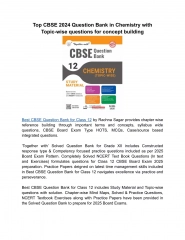Rakeb.S1 - 2/23/2025
"This content dated February 23, 2025, relates to Rakeb.S1. Explore insights and information within this entry. Delve into the details provided about Rakeb.S1 in the given content."
Download Presentation

Please find below an Image/Link to download the presentation.
The content on the website is provided AS IS for your information and personal use only. It may not be sold, licensed, or shared on other websites without obtaining consent from the author.If you encounter any issues during the download, it is possible that the publisher has removed the file from their server.
You are allowed to download the files provided on this website for personal or commercial use, subject to the condition that they are used lawfully. All files are the property of their respective owners.
The content on the website is provided AS IS for your information and personal use only. It may not be sold, licensed, or shared on other websites without obtaining consent from the author.
E N D
Presentation Transcript
2/23/2025 Rakeb S 1
Processing After a patient is irradiated on the film, the latent image is produced This invisible latent image is made visible by processing The term for several procedures that collectively produce the visible and permanent image is called processing. Exposed films can be processed by using either manual or automatic processor 2/23/2025 Rakeb S 2
Stages of processing are: Development - Converts latent image to black metallic silver. Rinsing [stop bath] - Removes excess developer. Fixing and Hardening - Dissolves out unexposed silver halide crystals. Washing - Removes products of processing. Dry - Removes water 2/23/2025 Rakeb S 3
DEVELOPMENT The nature of Development Development is the production of a visible metallic silver image from the latent one which exists in the sensitive material after exposure to light or x-radiation. Silver halide grains in the emulation which have been exposure to light becomes converted to metallic silver Those which have not receive light remains largely unchanged The conversion to black metallic silver accounts for the blackness of those parts of the film upon which light or x-ray have acted 2/23/2025 Rakeb S 4
Developer is not completely selective between those silver halide grains which have been exposed and those which have not. In time the developer will blacken all the silver halide grains Therefore the function of developer is to reduce metallic silver grains of silver halide very much more quickly than the unexposed ones The action of developer reduction is achieved by donating electrons to silver ion in the grains, thus neutralizing their positive charge and converting to metallic silver 2/23/2025 Rakeb S 5
The pH scale pH scale is used to express the degree of acidity or alkalinity of a solution A scale of acidity can be made based on the hydrogen ion concentration In a neutral solution, the hydrogen ion concentration is 10-7 gram ions per liter and the Ph of a neutral solution is 7. 2/23/2025 Rakeb S 6
In photographic processing, developers lie on the alkaline side of 7, and fixers are on the acidic side of 7 (neutral point of Ph scale) Most radiographic developers function at a Ph above 9, and require to be kept constant within 0.1 and 0.2 on the scale. Fixers are contaminated by developer carried in to them, and in use their Ph rises as the alkaline developer reduces their acidity 2/23/2025 Rakeb S 7
The constitutions of developing solution Developing agents A developing agent is a substance able to change silver halide into metallic silver The conversion of a salt or oxide of a metal to the metal is called chemical reduction and The conversion of metals in to their oxides or salts is called oxidation When reduction occurs atoms or molecules gains; when oxidation occurs atoms or molecules lose electron 2/23/2025 Rakeb S 8
Photographic developing agents are thus chemical reducing agents Developing agents neutralize silver ions in the silver bromide by donating electrons to them Since the developing agents lose electrons in this transaction, they become oxidized in carrying out their function 2/23/2025 Rakeb S 9
Numerous substances have been used as developing agents 1. Metol-Hydroquinone combinations -----MQ developer Metol and hydroquinone reduce silver halides to metallic silver yet they act in different ways Metol Metol begins reduction readily Develop all exposed grains Once the reduction is initiated, the process continues slowly Susceptible to increased concentration of bromine 2/23/2025 Rakeb S 10
Hydroquinone Requires a strongly alkaline solution to act Does not begin development so rapidly as metol Has less effect on grains which have had little exposure Functions to give high contrast Once-----------development proceeds vigorously Supperadditivity 2/23/2025 Rakeb S 11
2. Phenidone- Hydroquinone combination ---- PQ developers Phenidone and hydroquinone are supperadditive together A little phenidone in comparison with metol is required Phenidone is regenerated by hydroquinone with greater efficiency than metol Phenidone is much less susceptible than metol to the restraining influence of the increased bromide concentration PQ developers do not exhaust as quickly as MQ developers 2/23/2025 Rakeb S 12
The accelerators Soften and swell the emulsion so that the reducers can reach the exposed grains Developing solution must be alkaline Too little alkali results in the developer being sluggish in action Too much alkali makes it overactive and uncontrolled so that it develops unexposed crystals and produces fog 2/23/2025 Rakeb S 13
Developing solutions include an alkali so that they may react at the desired rate and this alkali called accelerators The alkali used in solutions for radiographic developers are sodium carbonate, sodium hydroxide, potassium carbonate and potassium hydroxide 2/23/2025 Rakeb S 14
The restrainer (potassium bromide) Its function is to check action on unexposed ones, i.e., to prevent fog(moderate the rate of development) Its acts by increasing the barrier of negatively charged bromine ion which exist around the silver bromide crystals Without any restrainer the developer will be too active and will reduce the unexposed grains too rapidly 2/23/2025 Rakeb S 15
The preservative (sodium sulphite or potassium sulphite) Developing agents are easily oxidized and readily absorb oxygen from the air Preservatives helps to protect the reducing agent from oxidation because of their contact with air. It also reacts with oxidation products to reduce their activity Preservative checks the rate of oxidation Addition of preservative to developing solution Does not entirely stop aerial oxidation Reduce the rate at which it occurs Minimizes the more damaging effect 2/23/2025 Rakeb S 16
Hardeners Glutaraldehyde is used as a hardener to retard the swelling of the emulsion. This is necessary in automatic processors in which the film is transported by a system of roller The solvent The solvent used in making photographic solutions is almost always water 2/23/2025 Rakeb S 17
Other additions Further ingredients in addition to the basic group Water softeners, wetting agents, bactericidal solutions Some additions are provided in order to buffer the solution A buffering solution is capable of accepting quantities of acid or alkali without much change in pH Sodium carbonate with sodium bicarbonate Boric acid with sodium hydroxide 2/23/2025 Rakeb S 18
The development time Development time is the period required for the image to develop to optimum density and contrast Factors which alter the development time are as follows 1. The constitution of solution 2. The temperature of solution 3. The degree of exhaustion of solution 4. The agitation given to the solution and the film which is being developed 2/23/2025 Rakeb S 19
Temperature of solution A developer is more active as it becomes warmer Lower temperature imply longer development time and higher temperature indicate shorter development time Very low temperatures may make a developer almost inactive Very high temperature Can fog the image Physically damage the film, separating the gelatin from the base NB: physical damage is more likely if the emulsion is swollen and soft Different developing agents are affected to different extents by changes in temperature 2/23/2025 Rakeb S 20
Time-temperature technique Practical method used in manual processing Immersing the film for a certain length of time in developer solution which is at a certain temperature 20 degree Celsius for 4 minutes Variations 2/23/2025 Rakeb S 21
Exhaustion of the developer since the composition of solution alter as it used activity of developer decreases The following occurrences take place in the tank of developer Developer solution is taken out of the tank in the emulsion and on the surface of the film The developing agents are changed by oxidation The oxidation products formed may retard the action of development The bromine ion released with use------------- increases the bromide content of the solution The alkaline content of the developer falls Sodium sulphite in the solution forms sulphonates and is used up doing so a) b) c) d) e) f) 2/23/2025 Rakeb S 22
Used solutions are less energetic than fresh ones To make the activity of developer-solution constant a solution called replenisher must be added The constitution of replenisher Developing agents in somewhat higher concentration High concentration of alkali Some extra sulphite Bromide is not included. There may be other additions to maintain adequate buffering of the solution 2/23/2025 Rakeb S 23
Replenishing a manual system There is no automatic addition of a certain amount of replenisher for every film processes Developer tanks must be replenished by hand The purpose of adding replenisher is: To maintain the level of the solution in the tank To regenerate the solution of the chemically 2/23/2025 Rakeb S 24
Agitation of films and solution Agitation of the film and movement of the solution about the film during the period of development have two prominent effects 1. The rate at which development takes place is increased so that shorter development times are required 2. Uniformity of development is promoted 2/23/2025 Rakeb S 25
Manual (Hand) Processing Strong smell of chemicals Messy Time comsuming 2/23/2025 Rakeb S 26
Constitutions of developers (Automatic developers) The developers used in automatic processors contain the following 1. A developing agent 2. An organic hardening agents such as glutaraldehyde which acts in an alkaline 3. A preservative such as sodium or potassium sulphite to combat oxidation 4. Organic antifoggants such as benzotriazone and developer restrainers such as potassium bromide to minimize the growth of film fog 2/23/2025 Rakeb S 27
5. Sodium carbonate or potassium carbonate to act as a source of alkali and also as buffer 6. NaOH or KOH as a source of alkali and thus to be the accelerator or activator of the developer 7. A sequesterting agent to combat the formation of insoluble salts 2/23/2025 Rakeb S 28
In formulating a developer for an automatic processor, the manufacturer has certain considerations in view: Solution injection area into the tank Cleanliness of the processor Oxidation must be resisted pH must be controlled through effective buffering 2/23/2025 Rakeb S 29
The effective sensitivity of film depends on several factors associated with the development: the type of developer developer concentration developer replenishment rates developer contamination development time development temperature 2/23/2025 Rakeb S 30
Automatic Processor 2/23/2025 Rakeb S 31
FIXING Functions Stop any further development Clears the image (making the background transparent to light) Makes the image permanent (fixed)(no more sensitive to light)by Removing the undeveloped silver bromide crystals from the emulsion Hardens the emulsion 2/23/2025 Rakeb S 32
Fixer constituents Solvent Fixing agent Acid Hardener Buffer Preservative Anti-sludging agent 2/23/2025 Rakeb S 33
The fixing agent Fixing agent is required to 1. React with silver halide to form a soluble compounds (Ammonium Argento- Thiosulphat &NH4Br) 2. Leave the gelatin unchanged 3. Have no appreciable effect on the silver image Examples of fixing agent 1. Sodium Thiosulphate Most commonly used Reaction: silver bromide + sodium Thiosulphate=> sodium salt of monoargento dithiosulphuric acid + sodium bromide These compounds are soluble in and removed in water Liquid form 2/23/2025 Rakeb S 34
2. Ammonium Thiosulphate In widespread use for proprietary products supplied as liquid concentrates Outcome of the reaction: ammonium salt of monoargento- dithiosulphuric acid and ammonium bromide which are soluble in water These ammonium silver complexes are highly soluble in water and be washed out of the film very quickly 2/23/2025 Rakeb S 35
Acid, Stabilizer, Buffer Stop development to provide suitable environment for hardening agent Developer carried into the fixing bath in or on the film and continuing its action can have certain possible effect Cause dichroic fog Produce another type of stain Produce streaks on the radiograph A suitable acid is usually included in the fixing solution to preserve the film from the above (1-3) ills 2/23/2025 Rakeb S 36
A weak acid (acetic acid frequently) is used (to reduce sulphur decomposition There is still some tendency by the thiosulphate solution to decompose and precipitate sulphur, even though the acid is not strong To prevent this, it is usual to include in the solution a preservative or stabilizer It is general practice to buffer, acid fixing baths, so that the pH will be maintained 2/23/2025 Rakeb S 37
Hardener The emulsion layer of a film absorbs moisture and swells during processing Hardening of the emulsion during fixing results in its being less swollen at the end of the wet processing cycle Efficient hardening has certain beneficial effects Limit emulsions water absorption Reduce drying time Minimize physical damage 2/23/2025 Rakeb S 38
Three hardening agents have been used for fixing baths in x-ray darkrooms 1. Chrome potassium alum 2. Potassium alum 3. Aluminum chloride The solvent The solvent and diluents for fixing solutions is always water Other additions Boric acid ----------------------------anti slugging agent 2/23/2025 Rakeb S 39
Factors affecting Fixation Several factors affect the rate of clearing and fixing time. The type of fixing agent used The concentration of the fixing agent The temperature of the solution The presence of aluminum, salts such as potassium alum or aluminum chloride used as hardeners The fixing material-screen type or direct exposure film Agitation of the film during fixing Exhaustion of the fixing bath 2/23/2025 Rakeb S 40
Replenishment of Fixer Replenishment of fixer is necessary to Maintain the activity Maintain the volume i. ii. The rate of replenishment depends on Area/number of films processed Type of emulsion/film Type of image i. ii. iii. 2/23/2025 Rakeb S 41
Replenishment of chemicals Automatic processing Manual processing Added automatically by the replenishment pumps at a given rate for each film processed The replenisher are supplied as liquid concentrates The level of the solution is simply maintained by adding fresh fixer as it falls. The add solution contains Fixing agent Acid Hardener Sulphite 2/23/2025 Rakeb S 42
TABLE TOP AUTOMATIC PROCESSOR Automatic X-ray Film Processor 2/23/2025 Rakeb S 43
Fixer temperature The activity of fixing agents increases with temperature. But high temperatures cause emulsion swelling and becomes susceptible to damage. However precise control of temperature is not necessary 2/23/2025 Rakeb S 44
Fixing time The fixing time should be long enough to complete the fixing process. The required time for complete fixation depends on the i. activity ii. type of film emulsion iii. Agitation of fixer solution 2/23/2025 Rakeb S 45
Fixer Retention(Not Washed Off) 2/23/2025 Rakeb S 46
Silver recovery The reclamation of silver after it has been used for its intended photographic purpose There are two main sources of such silver as is recoverable. These are i. Exhausted processing solution ii. Discarded film materials and photographic papers 2/23/2025 Rakeb S 47
Reasons for silver recovery -------------------(Economy and Environment) Silver is natural resource which is becoming scarcer Silver commands a high price Recovering helps to save costs About of the film s silver remains in the emulsion after exposure & processing. Other (unexposed silver) is removed from the film during fixing process. Silver is toxic to public water supply must have proper disposal 2/23/2025 Rakeb S 48
RINSING The rinse is the stage in the processing cycle which may be b/n development and fixing Its is to prevent film materials from carrying active developer with them into the fixer The presence of developing agents in the fixing bath can result in Dichronic fog Staining from the brown final oxidation products of oxidized developer In increased alkalinity of the fixing bath as the developer solution contaminates it 2/23/2025 Rakeb S 49
Rinsing in manual processing Immediately after development the film is dipped in the water in order to: Stop development To wash the developer from the surface of the film (reduces developer carry over to fixer) i. ii. Rakeb S 50 2/23/2025






















